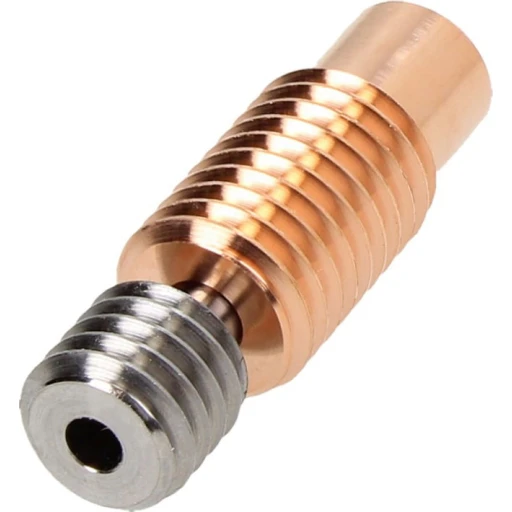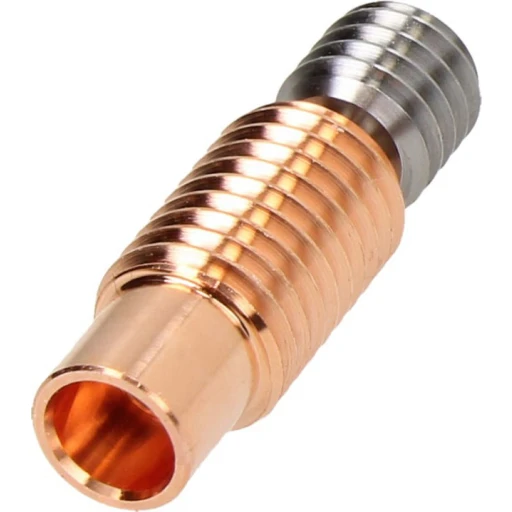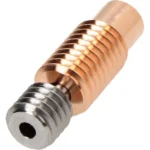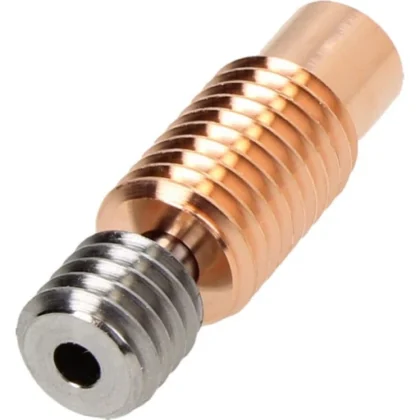Description:
The bi-metal thermal circuit breaker is composed of two components with different thermal conductivity: copper alloy and titanium alloy. While the titanium alloy reduces the upward thermal conductivity, the copper accelerates the downward heat release. It allows you to print at temperatures up to 500 °C and effectively prevents the filament path from being blocked thanks to its smooth inner wall.
Main characteristics of bi-metal thermal circuit breaker:
- It consists of copper alloy and titanium alloy
- Does not wear as easily as a stainless steel thermal cut-off switch
- For fine printing
- Smooth inner wall
- Reduces heat leakage
- Increased melting area
- Printing temperature up to 500 °C
How the bi-metal heat switch works:
The thermal breaker is considered the connecting part between the “hot” and “cold” ends of the heater and is used to form a transition zone between the molten material and the solid filament that is fed to the nozzle.
If this precise transition area is not provided, the filament is prone to soften prematurely and obstruct the filament path. The result is thermal slippage.
Most thermal breakers are made of metal with a Teflon tube inside. This tube thermally insulates the filament before it reaches the nozzle. A PTFE lined thermal breaker is suitable for PLA work as they do not require high temperatures. However, all-metal thermal breakers allow you to print at higher temperatures without worrying about the PTFE tubing or dangerous fumes.
The double-metal thermal circuit breaker not only improves the basic problems that the PTFE tube thermal circuit breaker has, but also has advantages that cannot be compared with the all-metal stainless steel thermal circuit breaker.














There are no reviews yet.